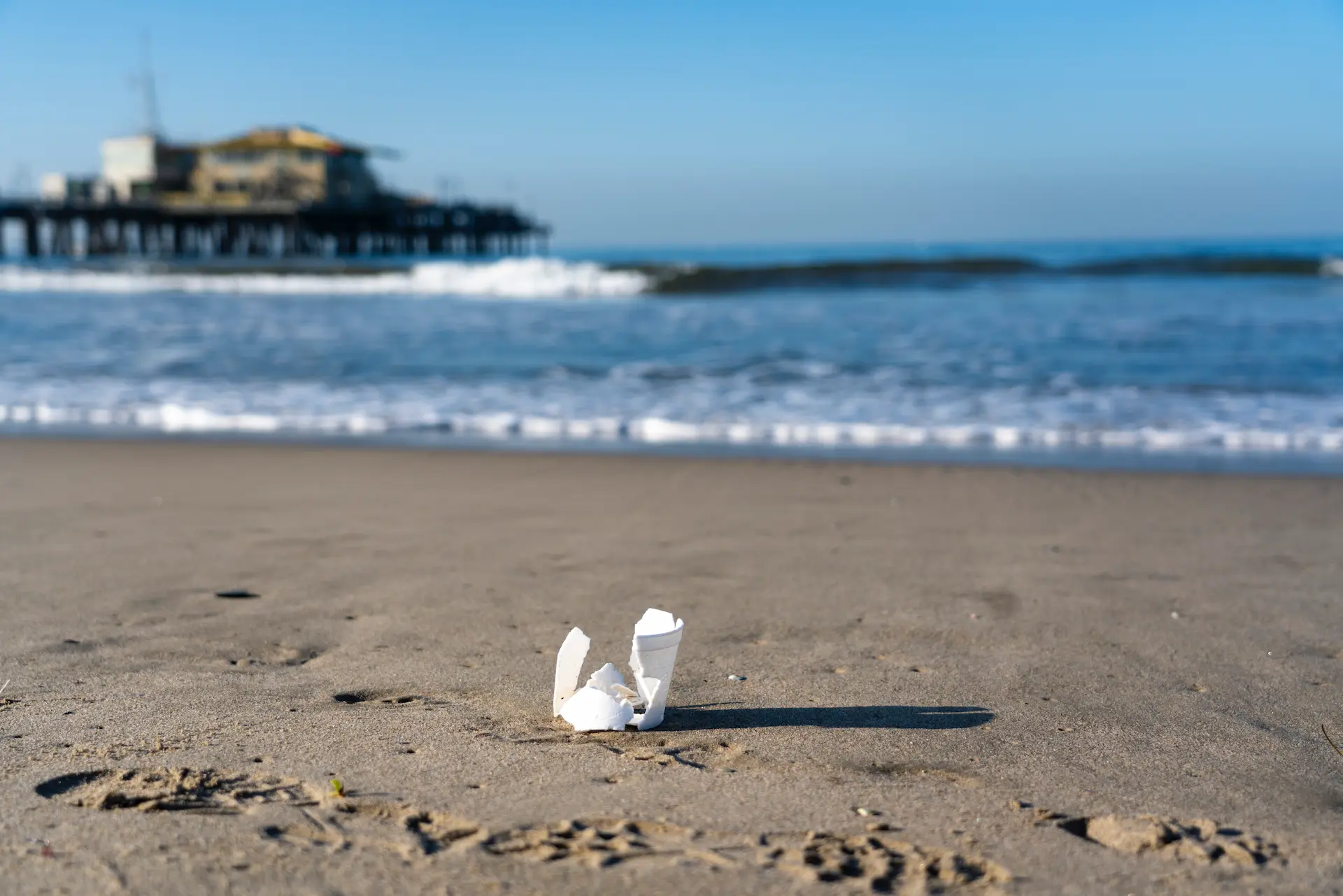What the Foam?!
The call for a national ban on polystyrene, also known as plastic foam

I’ve had the opportunity to travel to beaches around the world, from the white sands of the Dominican Republic to the fjords of Alaska. Even in places that couldn’t be more different from each other, there’s one kind of trash that always seems to show up: plastic foam.
Plastic foam, known scientifically as “expanded polystyrene” and often referred to colloquially by the brand name “Styrofoam,” is probably not something you think about most of the time. But once you start looking for plastic foam, chances are, you’ll find it everywhere. In my case, that’s meant taking notice when I see plastic foam littering the streets, poking out of garbage bins in my neighborhood or even hiding in the corners of my living room, tiny reminders of packaging from furniture purchased months ago.
Get Ocean Updates in Your Inbox
Sign up with your email and never miss an update.
Plastic foam can be found almost anywhere you look in our environment. Plastic foam foodware items are consistently among the most collected items from beaches and waterways during Ocean Conservancy’s International Coastal Cleanup®(ICC), with volunteers collecting more than 8.7 million foam cups, plates and takeout containers since 1986. In 2022, plastic foam takeout containers were the seventh most common item collected by volunteers globally—that’s the highest a plastic-foam item has ranked since Ocean Conservancy started tracking this category a decade ago.
Plastic foam fragments are even more common. Anyone who’s ever encountered plastic foam knows that it breaks apart easily and can be blown by the wind, and cleanup data bears this out. Nearly 30 million tiny foam pieces have been collected and recorded by International Coastal Cleanup volunteers, and foam pieces have been the most common type of microplastic collected by Ocean Conservancy and the University of Toronto Trash Team’s International Trash Trap Network for two years running.
Not only is plastic foam everywhere, it’s also harmful. Marine species from sea turtles to shellfish have been found to ingest foam, and the chemical leaching from plastic foam has been found to harm sea life. Plastic foam is ALSO not recyclable, compostable or biodegradable. The longer you think about plastic foam, the clearer it becomes that we have a plastic foam fiasco on our hands. It’s enough for anyone to have a WTF moment!
America seems to be having a WTF moment, too. Ocean Conservancy’s new “What The Foam” report, shows that three quarters of Americans are concerned about plastic foam as a source of litter, and more than 70% across party lines would support a national ban on plastic-foam foodware.
The good news is momentum to eliminate this material in the last decade has increased tremendously with many national, state and local governments phasing out plastic foam. At the same time, our ocean needs bigger and bolder action now, and there’s still a TON of plastic foam out there. Using 2021 Ocean Conservancy survey results that found 22% of all American takeout and food delivery orders contain plastic foam foodware, we estimate that at least 5.6 billion pieces of plastic foam are used by Americans each year—and of that, as high as 2.5 BILLION pieces end up contaminating recycling systems.
It’s time for ocean lovers everywhere to join us in saying “What The Foam?!,” and help us call for a national ban on this material, starting with plastic foam foodware.
So ahead of this year’s International Coastal Cleanup, we invite you to be a part of the movement to get this plastic foam off our beaches for good. Tell Congress to say, “What The Foam,” and pass legislation getting rid of these items across the country. Take stock of your own personal waste habits and look for reusable options. And join the International Coastal Cleanup this September and beyond. As you’re collecting ocean trash and data, take note of the plastic foam that you’re finding using Ocean Conservancy’s Clean Swell® app—chances are, it’ll add up, and you’ll have your own WTF moment.
Read the report here.
Learn how to join a cleanup here.